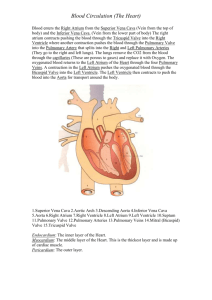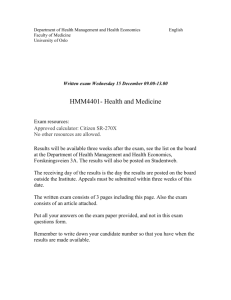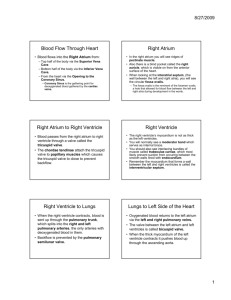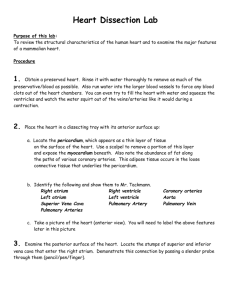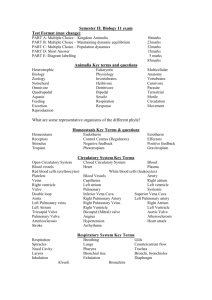Heart Dissection Protocol
advertisement
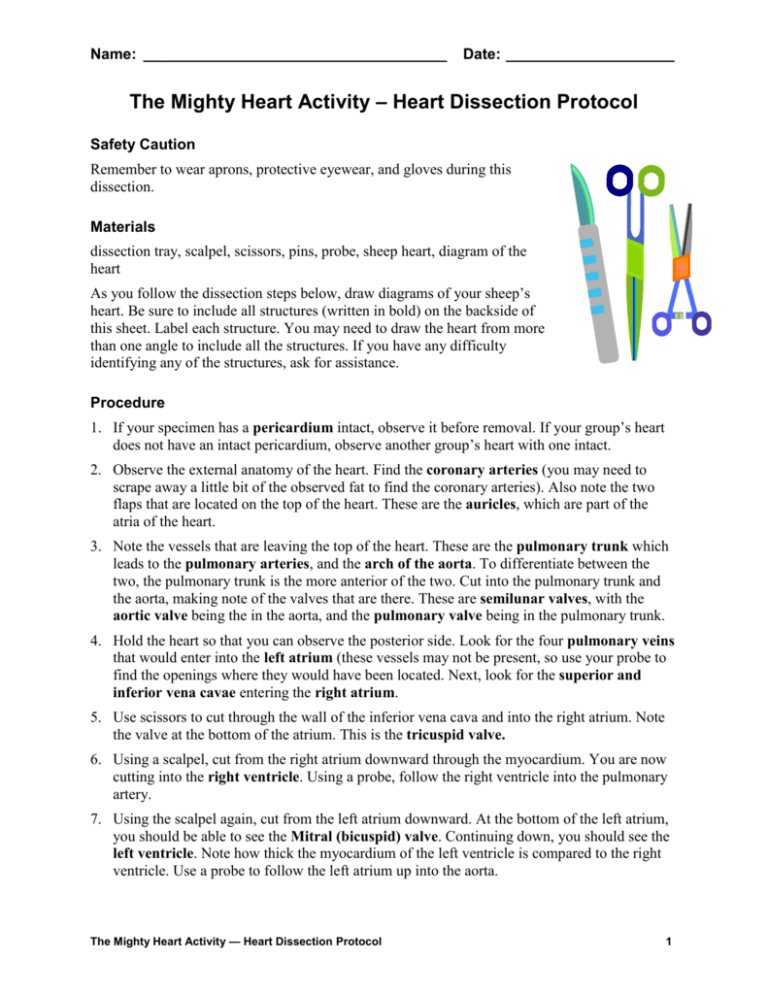
Name: ____________________________________ Date: ____________________ The Mighty Heart Activity – Heart Dissection Protocol Safety Caution Remember to wear aprons, protective eyewear, and gloves during this dissection. Materials dissection tray, scalpel, scissors, pins, probe, sheep heart, diagram of the heart As you follow the dissection steps below, draw diagrams of your sheep’s heart. Be sure to include all structures (written in bold) on the backside of this sheet. Label each structure. You may need to draw the heart from more than one angle to include all the structures. If you have any difficulty identifying any of the structures, ask for assistance. Procedure 1. If your specimen has a pericardium intact, observe it before removal. If your group’s heart does not have an intact pericardium, observe another group’s heart with one intact. 2. Observe the external anatomy of the heart. Find the coronary arteries (you may need to scrape away a little bit of the observed fat to find the coronary arteries). Also note the two flaps that are located on the top of the heart. These are the auricles, which are part of the atria of the heart. 3. Note the vessels that are leaving the top of the heart. These are the pulmonary trunk which leads to the pulmonary arteries, and the arch of the aorta. To differentiate between the two, the pulmonary trunk is the more anterior of the two. Cut into the pulmonary trunk and the aorta, making note of the valves that are there. These are semilunar valves, with the aortic valve being the in the aorta, and the pulmonary valve being in the pulmonary trunk. 4. Hold the heart so that you can observe the posterior side. Look for the four pulmonary veins that would enter into the left atrium (these vessels may not be present, so use your probe to find the openings where they would have been located. Next, look for the superior and inferior vena cavae entering the right atrium. 5. Use scissors to cut through the wall of the inferior vena cava and into the right atrium. Note the valve at the bottom of the atrium. This is the tricuspid valve. 6. Using a scalpel, cut from the right atrium downward through the myocardium. You are now cutting into the right ventricle. Using a probe, follow the right ventricle into the pulmonary artery. 7. Using the scalpel again, cut from the left atrium downward. At the bottom of the left atrium, you should be able to see the Mitral (bicuspid) valve. Continuing down, you should see the left ventricle. Note how thick the myocardium of the left ventricle is compared to the right ventricle. Use a probe to follow the left atrium up into the aorta. The Mighty Heart Activity — Heart Dissection Protocol 1

